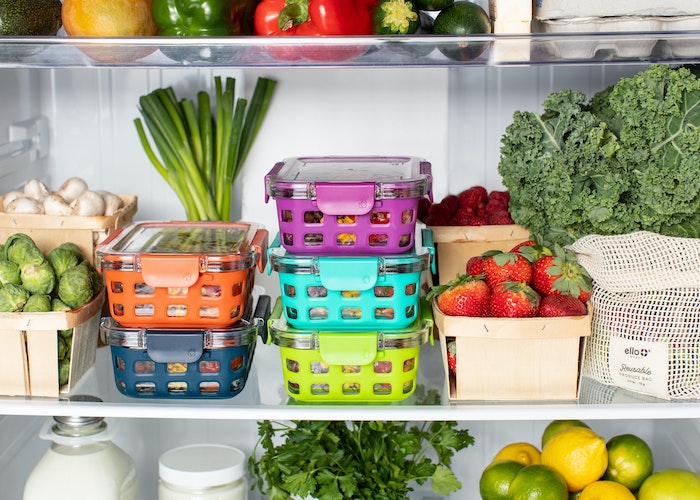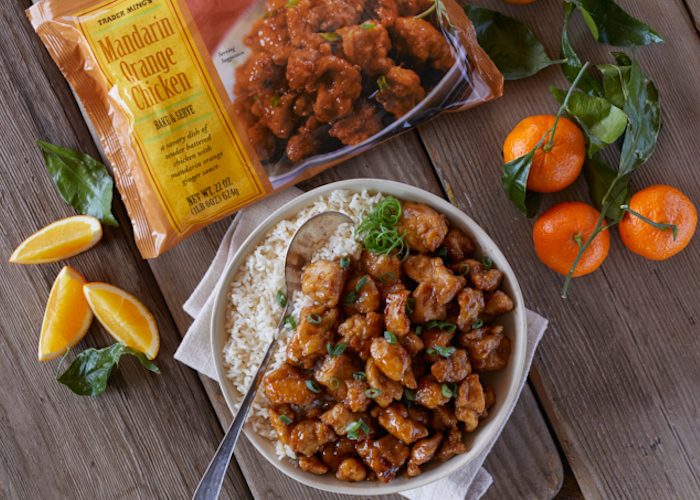Exactly How We Stick To A $50 Weekly Grocery Budget In A 2-Person Household

Budgeting our money every week is a task that we’ve just recently started doing together. My fiance, a sous chef, and I, a pharmacy technician, don’t find ourselves in the most lucrative of occupations (at least in our area), so the probability of finding extra cash in our checking accounts can be slim to none.
As a young couple, we always found that the bulk of our spending was a result of eating out. At one point, almost 40% of our disposable income was spent on restaurants — yikes! After reviewing our monthly spending, we knew we had to make some adjustments.
Here are the rules we follow to stick to our $50 weekly grocery budget for two people:
Make your menu, and stick to it.
Thankfully, my fiance is a well-seasoned sous chef (like what I did there?), so he’s quite knowledgeable and creative in the kitchen on his own. I, on the other hand, needed a little more inspiration. So, not only were we trying to tame our food budget, but we also had to sit down and figure out how we could streamline our grocery shopping and our weekly menu.
This wasn’t always the most fun part of our week. Often, it was a drag to have to think and plan out so many details about our week when it comes to food. It was worth it to research the kinds of foods we enjoyed eating but that would also be simple to make. We both work full time and spending long hours over a stove is not the ideal activity at home. Instead, we team up to find fun and easy recipes to follow to help keep our bellies full and our taste buds happy.
I’ve found that creating this menu for us and having it posted gives us a sense of preparedness when it comes to a seemingly simple task like eating. Writing it down makes you accountable for this meal, creating it, and enjoying it. Now, when I say “stick to it,” I don’t mean that each component needs to be exact because ingredients can and should differ if that’s what you need to do to enjoy the meal in full. I mean stick to it in the sense that you shouldn’t make any excuse to pick up food on the way home or order takeout because you got too lazy to cook. Make your menu, and stick to it.
Take some time to shop around.
We found it very worthwhile to really take a look at weekly sales at different grocers. We’ve found that while it may be more convenient to do your entire shopping at one store, you may find that you could’ve purchased the same few products for a better price at another retailer. What a major bummer it is to feel like you’ve lost out on a great deal!
I get that most of us are in a rush or a hurry when it comes to a task like grocery shopping, but there is a benefit from taking the time to research weekly circulars available online. Shopping around for weekly specials via online circulars and ads helped us to avoid unnecessary trips to grocers who didn’t have much to offer us for the week. What we’ve found is that our local Aldi grocery store offered us more than what we really expected. I mean, I spent $50 for a week’s worth of groceries at Aldi, which is half than what I’ve paid for the same amount of groceries at Safeway.
To give you an example of worthwhile price differences, we pick up 2 packs of bagels for our breakfasts. At Safeway, they’re $3.99 for a pack of 5 bagels. At Aldi, they ring up at $1.99 for the same 5 bagels. If we didn’t do our research, however, we would have continued overpaying for the same product that we could have gotten at a different grocer for almost a third of the price. To me, that’s a deal to take advantage of.
Stay prepared with value sizes.
A major deal we found was buying our proteins in larger sizes rather than the typical portions that make about one night’s dinner. At most grocery stores, you’ll get a better value if you buy their larger, value sized protein offerings. To really make it work, consider purchasing protein cuts that are probably the least popular. Instead of the well-loved chicken breast, consider the chicken thigh or leg. Buying bone-in chicken will also save you extra cash (it takes skill and time to de-bone protein, and the price will have to reflect that). We buy a large pack of bone-in chicken thighs every week for a simple roast. The cost-effectiveness of these chicken thighs can be as low as 99 cents a pound during certain sales. During those times, especially, I’ll purchase about 4 pounds of chicken thighs and portion out the pack when I get home to freeze. This provides us with a protein option sitting in our freezer for weeks to come, saving us both time and money later on. Roasting off a pound of thighs provides us with about two dinner portions or more for the week, with leftovers that can be reheated as-is or repurposed into a different meal, like chicken salad. I’ll usually season my thighs with a poultry seasoning blend, salt, pepper, smoked paprika, olive oil, and garlic. Serve it alongside roasted potatoes and broccoli — dinner is as simple as that.
We also apply this logic to many other large cuts, like pork butt or beef eye of round. We actually snagged a 3.5-pound pork shoulder on sale for $1.99 per pound! These large cuts can be portioned out and frozen for an easy defrost and roast that’ll provide dinner and lunch. We decided to throw that entire pork shoulder into the crockpot with red wine vinegar, garlic, brown sugar, oil, oregano, cumin, salt, and pepper, cooked on low for 6-8 hours. This was our dinner for two nights, plus one day’s lunch. We put the rest of the cooked pork into the freezer for a quick dinner or lunch option when we’re in a pinch later in the month.
These large cuts can also be portioned and sliced in preparation for a quick stir-fry. Stir-fried dishes are some of the easiest, quickest, and most economical dishes to make for a quick dinner, and something we have at least once a week. I’ll catch a beef London broil for $2.99 per pound and grab a pound to portion and freeze. Using a half-pound of the London broil, I’ll slice as thin as I can and stir-fry in a hot pan with oil, oyster sauce, and sugar like my mother used to make for us. I’ll throw in the veggies towards the end with the beef so they capture some of the flavor but maintain their crispness. This would be an excellent dish to incorporate seasonal veggies (also a cost-efficient choice!) or a great opportunity to utilize those older veggies sitting a day too long in the fridge (we don’t waste food in this family!). We’ll usually pick up green beans and broccoli for about $1.99 per pound, and it’ll serve as a standard vegetable option throughout our week. They work fantastically roasted and stir-fried.
Skip out on processed foods.
Sometimes stocking the pantry means purchasing processed, manufactured foods that are not just bad for your wallet, but may also jeopardize your health in the long run. As tempting as these foods may be (I’m talking about you, Poptarts!), remember they’re not the best thing for your health — or wallet. Paying for brands’ packaging and manufacturing will often drive up those prices.
If sweets are what you’re craving, consider purchasing a cake mix, or even start from scratch and make those sweets at home. We always make a batch of cookie dough and portion it out for the freezer so that when we’re itching for a cookie we can bake some fresh from our own supply. Purchasing mixes and ingredients helps to bulk your pantry, and also allows you to cater to your sweet tooth with a homemade pastry but offering a great variety of ingredients that can be used to create other dishes. I’d like to add that you should consider, if going in this route of purchasing pre-made items, looking into generic or store brands. They’re much more cost-effective and offer the same product.
Want less, waste less.
Our main focus when it comes to reserving and stretching our dollars for the week has come down to only purchasing groceries we actually need. This ensures that we’re not overbuying groceries, and that the items that we buy are not wasted. Planning and organizing our meals has helped us tremendously by taking away the temptation of dining out, and buying our proteins in bulk has saved us from buying pre-portioned meat at the meat department for a less-than-reasonable price.
I’m not saying that these tips are set in stone or bulletproof. Honestly, they may not work for everyone, but these were the findings that helped us whip our grocery budget into shape. Give them a try, adapt them to your grocery shopping style, and you may find that you trim off a little cash from your grocery spending, too!
Image via Unsplash
Like this story? Follow The Financial Diet on Facebook, Instagram, and Twitter for daily tips and inspiration, and sign up for our email newsletter here.




